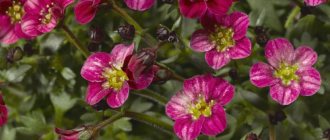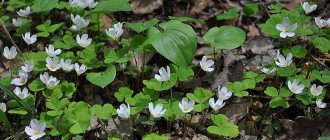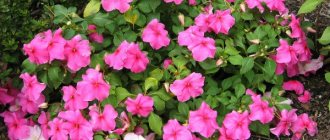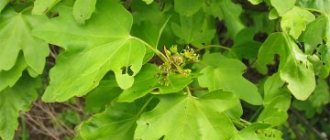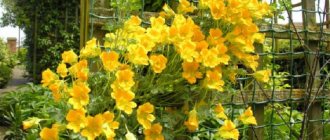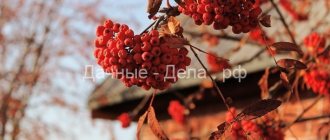Cyperus (lat. Cyperus), rosemary or “indoor papyrus”, “Venus grass” or “alternate sedge” refers to a large genus of perennial herbaceous plants of the Sedge family, including more than 600 species.
Under natural conditions it is found in the tropics and subtropics, in Africa. Cyperus is a moisture-loving plant , so when grown indoors, you will need to create similar conditions.
Description
In nature you can find species reaching 3 m in height; low varieties are common in indoor floriculture.
On the triangular, erect stems of the plant there are whorls in the form of an umbrella. The long, thin leaves come in varying shades of green. Thanks to breeding work, variegated varieties are found in indoor floriculture.
Cyperus blooms with attractive flowers that peek out from the axils of the leaves.
Indoor cyperus is an unpretentious, hardy plant that is used to decorate poorly lit areas of the room.
Kinds
More than 600 species are known and only some of them can be grown indoors.
Cyperus graceful. Cyperus gracilis
This dwarf indoor flower grows up to 30 cm in height and can decorate small spaces.
Cyperus variegata. Cyperus variegatus
One of the varieties of alternate-leaved cyperus. The leaves are narrow, pointed, long, curved. Numerous stripes are scattered across the entire surface of the foliage.
Cyperus Papyrus. Cyperus papirus
Perennial. Under natural conditions, it can be found along the banks of swamps in Egypt and Ethiopia. The leaves are huge and hang beautifully from the whorls. The inflorescences consist of several flowers located in the axils of the leaves.
Cyperus spreading. Cyperus diffusus
A tall species, reaching a height of 90 cm. There are few stems, but there are a lot of leaves located in the root zone. The foliage is 1.5 cm wide and 30 cm long.
Cyperus alternate-leaved. Cyperus alfernifolius
The umbrella plant at home reaches 1.5 m in height. These include the common Pharaoh variety. However, there are dwarf varieties that do not exceed 35-40 cm.
At the top of the graceful stems there are whorls. The leaves are pointed, narrow, curved.
Cyperus Zumula
This plant is sometimes called “fountain” or “cyperus for cats”, which love to feast on it. Zumula loves soil and air moisture. Grows both in pots and in home ponds.
Helfera
This species cannot exist without water. At home, you can grow it in an aquarium, decorating the rear view of the composition with it.
Perennial vegetation
To correctly select decorative perennials for the garden area, you need to study the characteristics of their growth and the frequency of flowering. For example, a plant called ophiopogon is very popular. Due to the black leaves of ophiopogon (Nigrescens variety), you can add exotic notes to the natural landscape.
Even in half-shaded areas, this plant will stand out with its unusual color. Over time, Ophiopogon will grow and take up more space.
This plant is a perennial, so there is no need to cut back its foliage in the winter. But it is still advisable to cover it with fallen leaves so that it does not die during severe frosts. Ophiopogon was originally grown in mild climates.
Perennial herbs for the garden: names and photos
Another perennial plant that is good for garden decoration is miscanthus. The most popular is the Chinese variety of miscanthus with variegated foliage of a bluish-emerald hue with stripes. These plants can reach two meters in height. The most interesting flowering variety is Early Hybrids, which forms panicles.
For the plant to grow normally, it needs a semi-shaded or well-lit area plus loose soil. From time to time you will have to feed the soil.
Look at photos and diagrams of mixborders made from perennials and find out how to decorate them beautifully and correctly: there are many successful examples - there is plenty to choose from!
Read this article for interesting ideas for a do-it-yourself garden.
Many owners of suburban areas use Ryegrass of the Variegatum variety in landscape design. This plant can withstand low temperatures. Ryegrass has contrasting foliage colors; it also has bulbs that grow nearby when they fall into the ground.
Another advantage of this plant is its growth in arid areas: it can be used to decorate areas that are difficult to provide constant care for. Ryegrass stands out for its variegated appearance.
Ornamental grass: photos and names
The perennial plant turf pike is also used for landscaping gardens. Most often it is planted near artificial reservoirs, near stones. As they grow, pike bushes acquire a rounded configuration, and a number of varieties also have variegated shades.
If you want to add color to your natural landscape, plant blue molinia in your garden. The soft blue color is complemented by white stripes that stand out in contrast under the sun's rays. Blue moth can also grow in shady areas. It requires cool conditions and sufficient moisture for optimal growth.
This plant looks great in combination with rose bushes and geraniums.
Ornamental grass for the garden: photos and names
The most popular aromatic herb used for garden decoration is oregano. The height of this grass is approximately 75 centimeters, its leaves are elongated and pointed, with a rich green color.
Oregano blooms from early summer until late autumn.
Recommendation: oregano leaves are used in cooking - this plant adds piquancy to dishes.
Ornamental grass, photo
Another popular herb perennial is hyssop. This plant is a small bush with elongated leaves; it tolerates dry conditions and cold well and can reach a height of 70 centimeters. The lower branches are green in color and gradually acquire a brown tint. Hyssop flowers are deep blue.
Ornamental grass with needle-like foliage, for example, fescue, which grows in a “cushion” manner, is also popular. Its height is 20 centimeters. Fescue blooms in mid-summer, the plant expels panicles.
Ornamental grasses and grains for the garden, photo
Growing and care
To get a beautiful plant with rich green foliage, you need to know the rules for growing cyperus at home.
Light
Under natural growing conditions, Cyperus basks in the direct rays of the sun all day.
In indoor conditions, it is necessary to provide it with diffused lighting.
When grown on a southern windowsill during the daytime, it is necessary to shade the plant so that it does not get burned.
It is better to grow on windowsills on the eastern, northern and western sides.
In winter, the plant needs additional lighting so that the daylight hours have a total duration of at least 8 hours.
Temperature
In summer, it is recommended to keep it at a temperature of +18-24 °C, in winter – up to +14 °C.
In winter, if it is not possible to provide additional light to the plant, you will need to reduce watering; in summer, watering should be plentiful.
Humidity
A moisture-loving umbrella plant needs high humidity, not lower than 70%. It is recommended to carry out water procedures from time to time, washing the foliage from dust and dirt, as well as spraying the plant.
To maintain constant humidity, you need to place a container of water next to the pot, hang wet towels on the radiators in winter, or buy a decorative fountain.
Watering
Cyperus does not like wetlands, but will die in dry soil. To control the amount of moisture, it is recommended to water the plant in a tray.
Soil and fertilizing
Sitnik loves fertile soils. In spring it is necessary to apply complex mineral fertilizer. Subsequent fertilizing is carried out with the same fertilizers at intervals of once every 2 weeks, or once a month.
Attention! When preparing a nutrient solution, you will need to dilute the specified amount in water in a concentration 3 times less than what is written in the instructions.
During the winter you can only feed cyperus 1-2 times.
Secrets of success
For Sedge, it is optimal to keep it moderately cold (+15–18°C); during the rest period, you need to provide it with a temperature of +5–7°C. Like other cold-flowering ornamental grasses, sedge “awakens” at 0°C and reaches its highest growth point at a temperature of +15–24°C (if the humidity is sufficient). This must be taken into account when storing rooted cuttings.
Sedge needs a lot of fresh air. In the warm season, it is good to “ventilate” a houseplant on a balcony or terrace. But under no circumstances should you leave Sedge in a draft!
IN THE PHOTO: Air bath for young plants of the sedge variety 'Phoenix Green'.
Regular removal of dry leaves and inflorescences will preserve not only the attractive appearance of the clumps, but also the health of your home sedge.
Transfer
Young plants are replanted annually, adult specimens - once every 2-3 years and as needed.
Cyperus is an unpretentious plant, so it
can be replanted at any time of the year.
Despite the fact that the rush plant is moisture-loving, it is still worth adding drainage to the bottom of the pot.
Expanded clay should occupy ¼ of the growing container.
Since Cyperus has a shallow root system, the container should be wide, but not deep.
You need to replant in a nutritious soil mixture with a neutral reaction.
Methods for preparing soil at home
- You need to take 1 part of high-moor peat, one part of humus and 1/6 of swamp silt.
- Mix one part of leaf soil with one part of river sand, one part of peat and two parts of clay-turf soil.
When preparing the substrate, it is recommended to add charcoal and crushed eggshells. Cyperus can be grown hydroponically.
Reproduction
At home, you can use several methods to propagate Cyperus:
- seed propagation;
- cuttings;
- propagation by rosettes;
- rhizome division.
Cyperus from seeds at home
The seed is planted in a soil mixture made up of sand and peat. After filling the container with substrate, the surface should be lightly compacted and sprayed with a spray bottle.
After distributing the seeds over the surface, the container is placed in a bag, creating greenhouse conditions for it.
From time to time you need to ventilate the plantings and moisten them with summer water. When small plants have 2 true leaves, you need to plant them in separate containers. For good growth, you need to place it in a well-lit place and water it as the earthen clod dries out.
Propagation by leaf rosettes
Sometimes, young rosettes appear. They should be cut so as to capture part of the stem. Plant with the umbrella down and the stem up. Yes, just the opposite. Soon new young plants will appear.
Cuttings
You can root cuttings in water in the same way. When the umbrella itself is cut, part of the foliage is cut off so that the cutting can fit in the glass and does not take up excess energy. Roots appear very quickly and the plant can be transplanted into the soil.
Propagation by tubers
When the time comes to transplant adult specimens, you can divide the tubers and plant them in several pots. All manipulations are carried out only with clean tools, and the cut areas are sprinkled with crushed coal.
What is suitable for garden decoration
Let's look at several types of plants that can be used to decorate garden areas:
- lawn grass – very popular due to its well-groomed appearance. It fills empty spaces and spaces between tall vegetation. But the condition of the lawn must be constantly monitored so that it does not lose its presentability;
- grasses creeping along the surface of the ground are ground cover ; they can also be used to decorate spacious areas. Such vegetation serves as a natural habitat for insects that benefit the garden, protects the soil from dryness and weathering and saturates it with useful substances;
- The brightness of the garden area can be emphasized by climbing plants and flowers ;
- It is also advisable to find an area for planting medicinal plants with healing properties on the site or in the garden, for example, echinacea - this herb is used for the treatment and prevention of many ailments;
- cereal crops are an excellent solution for those who want to demonstrate the grace of the garden and emphasize the natural beauty. Such plants look advantageous even without combination with flowers;
- tall plants are suitable for decorating the central areas of garden areas. They will turn into the main component of landscape decor and will focus attention;
- to decorate the garden area, you can also use a variety of ornamental vegetation in hydroponics: for its growth, not soil is used, but a special nutritional composition;
- The finishing touch to the design can be spicy varieties of plants with a pleasant aroma. Having such fragrant herbs in your garden will make you want to spend more time outdoors.
Medicinal herbs in the garden: photos and descriptions
Ornamental cereals, photo
Ornamental grasses for flower beds: names and photos
Recommendation: if you do not have the ability to control the growth of plants and care for them, you can choose artificial grass.
In addition to the garden area, you can also decorate the space between the trees on the site with herbs. Such a design will make the garden area more comfortable.
Possible problems
The main problem that gardeners face when growing cyperus at home is the curling and drying of the tips of the leaves.
To solve the problem, it is necessary to monitor soil moisture , since drying of the foliage is associated with lack of moisture in the soil.
If there is not enough light, the foliage may fade and become smaller.
Pests
The most dangerous insects are the following: spider mites, thrips, mealybugs, whiteflies.
Symptoms of pest infestation:
- when examining the edges of the leaves, punctures are clearly visible;
- a white cobweb becomes noticeable in the internodes and under the leaf blade;
- leaves become deformed and turn yellow;
- the presence of sticky plaque and whitish spots on the leaves of the plant.
If insects are detected, it is recommended to treat the plants with folk remedies: a solution of laundry soap, infusion of alcohol. Treatment with chemicals is necessary only if folk remedies do not give a positive result.
Diseases and pests
Frequent diseases of plants of the genus Sedge are gray rot and powdery mildew. The drugs Kopfugo Super, Ferazim and Derozal Euro cope with the prevention and treatment of gray rot. The spread of powdery mildew will be prevented and stopped by effective fungicides Topaz, Bayleton and Sulfarid.
Aphids, spider mites, scale insects, and mealybugs can seriously damage Sedge. Effective modern drugs to combat these mites and insects are the insectoacaricides Actellik, Actofit, Vermitek, Karbofos.
Signs and superstitions
Popular beliefs say that the elegant umbrella plant is used not only to decorate rooms, but also gives positive energy. Cyperus protects household members from various troubles.
On a note! By growing cyperus at home, you can protect yourself from lies, bad intentions, and deception. In addition, its cultivation is recommended for people prone to depression.
The umbrella plant helps improve sleep quality. There must be a pot of cyperus in the bedroom if the owners suffer from insomnia, are tormented, and cannot sleep.
Cyperus is undemanding to growing conditions, so even with minimal requirements it can be successfully grown at home. Cyperus is used to decorate the surface of the aquarium, and the Helfera variety is planted in combination with other aquatic plants.
Sedge selection
The most successful example of a plant with good adaptive abilities and plastic configuration is sedge.
This ornamental plant is planted both in shady areas and in the sun. Sedge does not need a lot of moisture. The most popular types of sedge are those with yellow and variegated foliage. Vegetation with decorative foliage is more difficult to adapt to existing conditions. But most species survive the winter without problems.
For example, in the landscape design of your garden you can use pendulous sedge: it can grow up to 1.2 meters. During the flowering season, “earrings” appear on the plants. This variety needs water, so it is preferable to plant it near bodies of water, combining it with bergenia and hostas.
Palm-leaved sedge looks no less attractive in the design of a summer cottage. It can be planted in damp areas. Most summer residents choose low-growing varieties.
Important! This species has fragile shoots; for this reason, it is better not to plant palm-leaved sedge next to paths, as it is easily damaged.
The Morrow variety belongs to evergreen vegetation. After the snow melts, you can notice that the sedge retains its original shape even after a long winter. This plant looks like a low hummock. For optimal growth, it should be planted in semi-shaded areas with moist soil.
Winged sedge is not as common as others. The plants reach a height of 30 centimeters, grow in damp areas, and tolerate frost well. To maintain the variegated color of the leaves, plant this type of sedge in sunny areas.
Another variety of sedge, mountain sedge, looks like low hummocks. The foliage of the plant is thin; in early summer it produces black ears. Mountain sedge is not recommended to be planted in damp areas and dry areas.
It is best to plant it close to other low-growing plants near borders.
Grass for the garden: photos and names
Rusty-spotted sedge gradually grows throughout the area and forms a clump. At the end of spring, the plants produce pink ears. Rusty-spotted sedge can bloom in both sun and shade.
The low bird-legged sedge has long leaves that spread like curls encircling a hummock. The Variegata variety is resistant to low temperatures, but in the spring the foliage may burn. This variety does not tolerate drought and dampness.
Planting in suitable places and proper care of various varieties of sedge will successfully complement the garden decor. Ornamental sedge species go well with hostas and plants from the fern family. They can be planted next to bells, rolls and other vegetation.
Decorative sedge, photo



